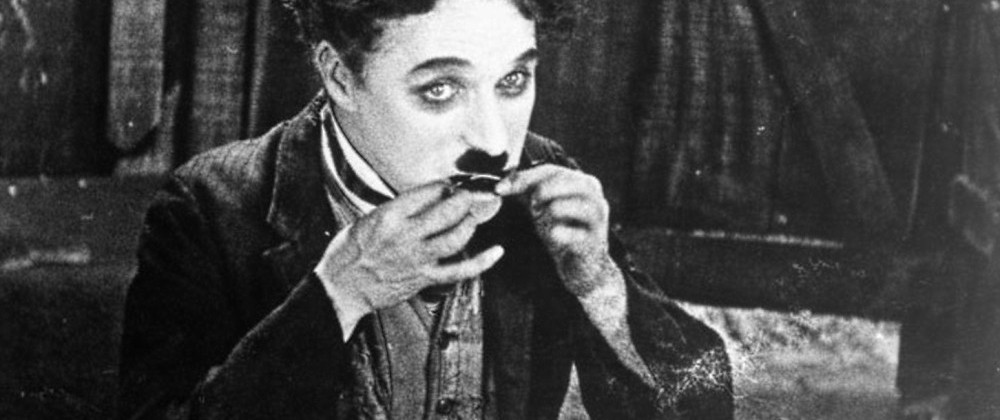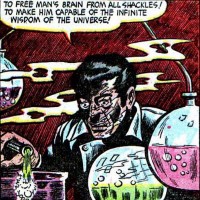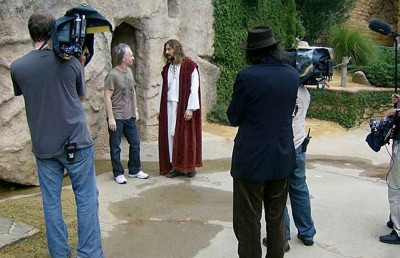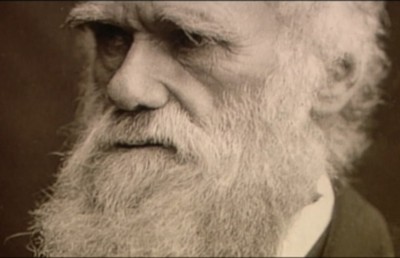Humour – A Synthesis of Philosophical, Psychological, and Evolutionary Approaches. Part 1: Classical Theories of Humour

Introduction
Before discussing the topic of “humour” and its associated words (laughter, comedy, jokes, etc) it is probably a good idea to be clear about how these words are being used. I have chosen to talk about laughter as the physical processes that people seem to emit when interpreting something funny. Laughter is a vocal utterance and a visual gesture which involves facial expressions and smiling. While we can control these biologically ingrained gestures (in a sense faking them or, more positively, employing them) there is evidence that laughter is a universal gesture and not culturally learned although it can be altered by culture (Martin 160-162, Gervais and Wilson 397-398). When I speak of comedy in this essay I am talking about the cultural forms of laughter stimulus (e.g. jokes, books, movies, cartoons, etc.). Jokes are a sub category of comedy and refer to linguistic expressions typically but by no means limited to, short one-liners. When it is not clear that a cultural form is being deployed I use the phrase “laughter producing stimulus”. I choose to use the word Humour as the entire process of comedy and laughter and to talk about the topic as a whole. I have also chosen to follow Rod A. Martin who employs the term “mirth” to refer to the pleasurable feelings associated with laughter and comedy (Martin 9).
Much of my work is based on the excellent textbook by Martin called The Psychology of Humour – An Integrated Approach (I also think its appropriate that a book on humour be written by a man named “Rod”). This text book intended for university students in some way touches every single aspect of humour theory (and all the various topics I will discuss) with remarkable clarity, detail and logic and has been such a valuable resource that I think it appropriate to highlight its importance in advance. Also I should note that much of my writing concerning psychology is related to the work of Professor William Lambert Gardiner, who I have had two classes with prior to writing this. Because he introduced me to certain psychological concepts and I use his books to quickly reference general theories he should be acknowledged as well. I have also chosen to use various examples of comedy from my personal experience to demonstrate moments of successful humour (although this is subjective I am at a loss for a better approach). The quotes by Mitch Hedberg (collected from his various recorded stand up acts) were quickly referenced from funny2.com. Further joke examples are taken from Mel Helitzer and Mark Shatz’s book Comedy Writing Secrets, a book which not only offers tips on comedy writing but has many funny quotes from popular comedians.
Much of the written work on humour has come from an philosophical history dating as far back as Socrates or Plato. This line of Humour Theory is usually divided into three major categories: 1) Superiority Theories, 2) Relief Theories, and 3) Incongruity Theories (Helitzer and Shatz, Martin, Mcghee, “Theories of Humour”, etc.). Each of these different approaches attempts to explain the fundamental mechanics of comedy and why it is we laugh at some things and not at others. While there are many differences between theorists who fall into the same category I have chosen to focus on one theorist from each in order to give the reader a more detailed look into the mechanics of these approaches. Following this I will look at comedy through the lens of modern cognitive psychology and cognitive linguistics to show how theorists are working towards an empirical explanation of why it is we laugh. My last section will be largely in the realm of evolutionary psychology which has a unique approach to understanding laughter as a communicative gesture and as part of a primitive emotional communicative system.
The Superiority Theory of Henri Bergson
Henri Bergson’s 1900 essay, Laughter, examines diverse forms of humour in an attempt to locate common elements. Bergson goes through different elements of comedy that he has observed and creates small maxims based on these observations which all lead to a major conclusion that comedy is about human life portrayed in a mechanical way. Of his claims about comedy there are perhaps three major ones: 1) comedy works on the intellect (and not on the emotions), 2) laughter comes from those who feel superior to others in attempt to correct their behaviour, and 3) comedy is about “the mechanical encrusted upon the living” (Bergson 84).When Bergson says comedy is about the intellect he is trying to understand the “absence of (serious) feeling” (63) in comedic material (plays, texts, movies, etc). For Bergson we never really empathize with the plights and trials of characters whom we laugh at – we have a “momentary anesthesia of the heart” (64). If we empathize with the plight of a prisoner we are not going to laugh at him, but rather feel sorry for him. However, if we can find a way to put aside this empathy (say by watching a film which is unreal or, more cruelly in real life, by dehumanizing someone) we are able to find a target for our laughter. We see this when bullies laugh at victims and historically through the seething laughter of Nazi guards at concentration camp prisoners on the verge of death. Cartoons are a less serious yet good example of how dehumanizing a character allows us to laugh at them: think of the difference between seeing Wild E. Coyote getting crushed by an Acme anvil vs. seeing a real coyote or person getting crushed by one. But maybe this area is an interesting realm for comedians to try and manipulate. Some of the greatest comedy on the screen are Documentaries which attempt to use real human characters as sources of comedy (e.g. Borat, Grey Gardens, or one of my all time favourite movies, American Movie). Perhaps these films function by dehumanizing characters to an extent but it does not seem cruel and what makes them so genius is that they take very real material and are still able to make it the source of comedy.
Bergson also believes that comedy, at its core, is society’s way of correcting weak behavior patterns in individuals. Bergson believes that comedy always has to do with the human (try to imagine purely abstract comedy, it’s difficult without anthropomorphizing) and so there must be some sort of human explanation to comedy. Bergson’s view of the person is one in which we have a near-infinite capacity of mind and reality that is limited/grounded only by the the body and “self-preservation” (73). While our bodies are limited by biology and the laws of physics our minds have complete freedom to expand and imagine. Despite this capacity for the infinite, says Bergson, we often behave in lazy, absentminded ways which result in predicable or rigid patterns of behaviour. Laughter, says Bergson, is other individuals’ ways of maintaining the strength of the infinite-mind world (which is shared by us all). Society sees something “rigid” (73), performs the “social gesture” (73) of laughing at it, and hence the laughed at individual is inspired by “fear” (73) to change his or her behavior improving themselves and the shared social world in the process (72-74). We have all been laughed at for doing something stupid and hence can relate to this. This aspect of his theory explains why comedy is traditionally about foolish characters (Charlie Chaplin’s Tramp, Animal House’s frat boys, the Howard Stern shows obsession with people who have substance abuse or strange speech patterns, etc.). According to Bergson we laugh at these characters in order to correct their behaviour in some way and this could be why the happy ending is so common in comedic stories –the story creator wants to solidify the laughter producing story in the correction of behaviour.
A third Bergsonian claim, and most central to his theory, is derived from the rigidity of the human spirit as being a source of comedy. Comedy, according to Bergson, is about the “mechanical encrusted upon the living” (84). Through observing various comic forms (the comic character, jokes, what children find funny, etc.) he finds the root of these things is to take human life and make it mechanical. His primary example is people laughing at someone who trips over a rock. What makes us laugh, says Bergson, is that instead of the person acting with a full mind and watching where they are going they act like absentminded machines “involuntarily” falling because of “rigidity” and “momentum” (66). Another example he brings up is funny-looking people (his example is the hunchback) who he says make us laugh because they look like things we can imitate. Because we can imitate them, Bergson says, it appears to us that they are acting based on a behavior pattern (the mind instead of the body) and hence we laugh in a sort of corrective gesture much like mentioned in the last paragraph. We can see this all over early film comedy (Buster Keaton runs around the screen like a mechanical toy, the Three Stooges treat each other like mechanical objects, etc). If we examine something like the jokes of stand up comedian Mitch Hedberg we find it as well. In his line/joke, “I had my palm read. I wrote something on it first to see if she would read that too” perhaps we find funniness because Hedberg is taking the word “read” too literally and showing himself to be thoughtless in this regard. We might imagine a computer program to make a mistake like this because it doesn’t have the same flexible capacities that humans show when we conceptually use a word in multiple contexts and understand multiplicity of meaning. Our laughter is a way of seeing the silliness of Hedberg, laughing at it, and attempting to correct it as if it were real.
The Relief Theory of Freud
If you have ever been laughed at you know that humour can hurt. Sigmund Freud, writing more specifically about jokes however in a manner that seems to apply to all forms of humour, saw aggression as an important aspect of humour. Humour, for Freud, was often a way for people to release desired energy by “circumventing” social repression. Freud saw that people have an ever burning animal core which is constantly creating aggressive and sexual energy (we can think of this perhaps as our primal brain and/or emotional urges). For Freud a big part of society is that in each of us we have had to repress this animal core in order that we may have a stable and organized society. But even though we’ve managed to tame ourselves in order to live in groups our earlier instincts are still there and act like a sort of wild energy within us constantly guiding us subconsciously. A common instinctual energy, for Freud, is sexual desire directed at another person. We often find ourselves attracted to other people and if that attraction goes unfulfilled (that is, if your mental desire to connect doesn’t result in a physical connection) then that energy must find another outlet. Some people put this energy into trying to establish a future sexual relationship, others put this energy into their work (often unconsciously), others go for a run, and still others simply go on the Internet and find surrogate sexual interfaces. However, we often simply repress the energy and it gets built up in us and can be a source of pain. Humour, in this theory, is the verbal expression of the fantasy (desired form of energy release) and a rebellious moment against the rigid rules of society. For example, dirty jokes are a way of dealing with sexual frustration and circumventing the rules imposed on individuals by the group.
Freud called jokes like this “tendentious” (meaning to have a strong purpose) as he saw them always directed at an object or person of troublesome desire or aggression. In this way comedy, rather than actually attacking someone physically or creating sexual interaction, does it in fantasy or play. This theorizes that jokes about sexuality are ways of acting out sexual desire through words (like a sort of virtual reality perhaps). The reason some of the jokes don’t work with everyone is because not all symbolic play is harmless. For instance, jokes about sexual conquests can be enjoyable for some people but perhaps others may get offended because they are emotionally affected by the words or they feel the jokes have some connection with the real world (perhaps they influence people to act or feel in certain ways or promote relaxed attitudes for example). The theory states that tendentious jokes are like getting an imaginary experience in place of an impossible real one but perhaps we don’t have to be so strict in saying there is a simulation element but that the release can be real in a sense. For example, if we are laughing at taboo subjects or when someone says something they are not supposed to (I am reminded of a game I played in the school yard where we each shouted «penis» as loud as we could and all laughed) it is not always the content or meaning of the words but the breaking or manipulating of rules surrounding how words are used. When we were young the words were only powerful because we weren’t supposed to say them and not because of any connection to their meaning. I suppose it represents an act of aggression towards the rule-structure itself and for no other reason that we are not supposed to do it. This makes this joke an example of tendentious humour that is actually real in the sense that it is an assault on an intended target (the rule system) with no substitute target. (The last two paragraphs synthesized from Freud 7-131 with elements about Freud’s outlook taken from Freud/Strachey, Gardiner 129-141, Martin 33-41, and my own thoughts.)
The Incongruity Theory of Koestler
In his 1964 book, The Act of Creation, Arthur Koestler examines the creative process and sees comedy to be related to the creative arts of science and tragedy. These three arts are separate in their emotional charge, he says, however similar in that they all involve a mental act of perceiving something or thinking about something in “two self consistent but mutually incompatible” ways (Koestler 35). It is particularly easy to see how this creative process exists in science when we think of all the scientific theories which fused together incompatible worlds and gave us a finer perspective on the universe (Gardiner mentions the destruction of dichotomies of Darwin and Piaget) (Gardiner 87). Koestler calls this fusion of two competing logics “bisociation” (more than association) (65). Bisociation in humour is always easy to find too (in fact incongruity theories like this are taken seriously in most modern psychological research). The Mitch Hedberg line, “I can’t eat spaghetti, there’s too many of them” can be understood as humorous because we perceive the spaghetti as both a single object and as many objects at the same time. Each definition/concept is consistent in that it appears linguistically as “spaghetti” yet incompatible when understood in different contexts.
Koestler mentions something he calls “emotional inertia” and this is related to how we laugh in that it explains why emotionally charged content (tendentious) is so prominent. Basing his thinking on the knowledge that our evolutionary ancestors were governed largely by the early emotional brain, Koestler thinks that laughter is the result of inconsistency between the speed in which the primitive “reptile brain” (57) emotions interact with more recently evolved frontal-lobe thinking. He says that emotions, which seem to be complex and incorporate muscles and multiple bodily and brain systems, involve “heavier machinery” (57) than more conceptual “thinking” which evolved later and takes place only in the frontal lobe (and therefor has a smaller area to work in). Evidence for this, he says, is seen whenever we feel anger or sadness and it takes us a while to cool off long after the initial emotional creating stimulus has left. According to Koestler first the perception/joke creates an emotional charge in a person and then the moment of bisociation is quickly untangled by the thinking frontal lobe. Once the incongruity is sorted out (and the emotional problem solved) the original emotional charge has become alienated from the thoughts of the person (which have moved on) and needs release. In this sense laughter is “economical” release of energy which creates homeostasis and the person who laughs returns to an optimal state appropriate to their situation (synthesized from Koestler and Martin 85).
The Mitch Hedberg spaghetti line is not obviously emotionally charged in a tendentious sense, however perhaps it is simply enough that we have the surprise/wonder/jolt of the changing perspective to drive our emotions forward. Another line of his, “My girlfriend works at Hooters. In the kitchen,” when examined closely demonstrates that the emotional charge is enhanced with the sexual implications. The two opposing lines of thought are first the assumptions a listener makes about his girlfriend (when one says their girlfriend work at Hooters it is always imagined that they are one of the famous servers who wear tight shirts and are somewhat endowed), mixed with the new knowledge that she is not necessarily what the listener assumes because she works in the kitchen. The emotional charge of the first line lingers as our brains have already figured out that we have no reason for this emotional charge and this, in Koestler’s model, is the reason why we laugh. What makes this joke effective is that it plays on our assumptions and the sexual material is realized to be generated by the joke-perceivers own dirty mind (that they might not have even known they had!).
Bibliography
Danesi, Marcel. Vico, Metaphor, and the Origin of Language (Advances in Semiotics). Bloomington: Indiana University Press, 1993. Print.
Fredrickson, Barabera L. What good are positive emotions? Review of General Psychology, 2, 300–319. (2000).
Freud, Sigmund. The Joke and Its Relation to the Unconscious. London: Penguin Books, 1978. Print.
Freud/Strachey(Trans.). Civilization and its Discontents, pb, 1962. New York and London: Ai 0393301583, 1961. Print.
Frijda, Nico. The Emotions. Cambridge: Cambridge University Press, 1986.
Frijda, Nico H, “The Psychologist’s Point of View.“Handbook of Emotions, Second Edition. Ed. By Michael Lewis and Jeannette Haviland-Jones New York: The Guilford Press, 2000.
Gardiner, W. Lambert. The Psychology of Communication. British Columbia, Canada: Trafford Publishing, 2008. Print.
Gervias, Matthew and Sloan Wilson, David. “The Evolution and Functions of Laughter and Humor: A Synthetic Approach.” The Quarterly Review of Biology, Vol. 80, No. 4 (2005). 395-430. Accessed Online February 2010.
Johnson, Mark, and George Lakoff. Metaphors We Live By. 2nd ed. Chicago: University Of Chicago Press, 1980. Print.
Lakoff, George (1993). “The contemporary theory of metaphor.” In A. Ortony (Ed.), Metaphor and Thought (2nd ed). Cambridge University Press, 1993. (pp.202-251). Print.
Koestler, Arthur. The Act of Creation (Arkana S.). Reissue ed. Boston: Penguin (Non-Classics), 1990. Print.
Kyratzis, Sakis (2003) “Laughing metaphorically: metaphor and humour in discourse.” [8th International Cognitive Linguistics Conference: July 20-25, 2003, University of La
Rioja, Spain. Theme session: Cognitive-Linguistic Approaches to Humour] http://www.ling.arts.kuleuven.ac.be/iclc/Papers/Kyratzis.pdf Accessed April 2010.
Helitzer, Mel, and Mark Shatz. Comedy Writing Secrets, 2nd Edition: The Best-Selling Book on How to Think Funny, Write Funny, Act Funny, And Get Paid For It. 2 ed. Cincinnatti: Writer’s Digest Books, 2005. Print.
Martin, Rod A.. The Psychology of Humor: An Integrative Approach. 1st ed. Toronto: Academic Press, 2006. Print.
Maryanski, Alexandra, and Jonathan H. Turner. On the Origin of Societies by Natural Selection (Studies in Comparative Social Science). Boulder: Paradigm Publishers, 2008. Print.
Mcghee, Paul E.. Humor, Its Origin and Development. New York: W H Freeman & Co (Sd), 1980. Print.
“Theories of Humour.” Wikipedia. Accessed April 2010. .














